Hurricanes are Making History this Year
July 16, 2015
Did you know that the 2015 tropical cyclone season in the Northern Hemisphere is already the most active on record? It’s a fact. Check out the graph below published by The Weather Channel and created by Colorado State University tropical scientist Dr. Phil Klotzbach and National Hurricane Center specialist Eric Blake. The take away: we are breaking records this year with the frequency of large weather events in the Northern Hemisphere.
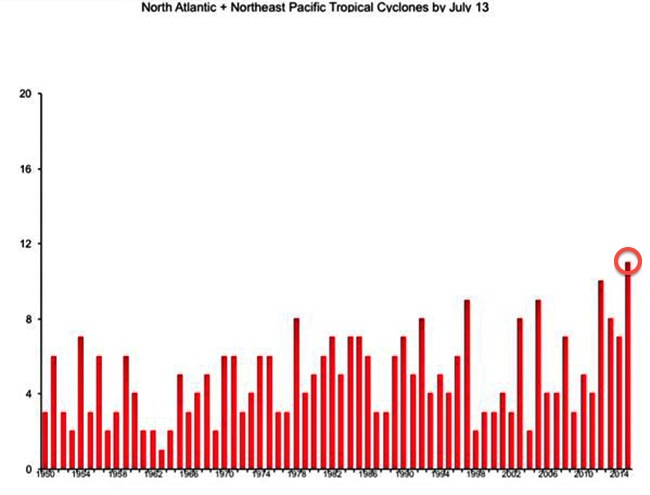
The effects of this intensifying trend were more than evident on Mission Blue’s recent Gulf of California Hope Spot expedition. For starters, the original expedition was slated to launch in September of 2014. Those plans, however, were scuttled in the face of Hurricane Odile, a major category 4 hurricane that is known as the most powerful landfalling tropical cyclone ever recorded. We lost communication with our local partners as the storm took hold and the images that came from the disaster were tragic. The expedition was postponed. See below what happened to Los Cabos Airport, located four miles from the coast. The damage to the region was in the billions, the most expensive hurricane ever to hit Mexico.

(Cabo San Lucas airport after Odile)
Mission Blue rescheduled the expedition to early June, 2015 which is typically ahead of the annual hurricane season in the Northern Pacific. Not so this year. After we arrived in Cabo San Lucas in early June of 2015, not one but two storms immediately started tracking off the southern tip of Baja: Hurricane Andres and Tropical Storm Blanca. This scenario was highly unusual. Andres was only the 5th hurricane to ever materialize that early in the Pacific since records started being kept. Moreover, Blanca was the second earliest hurricane on record to form in the Eastern Pacific.
Decisions had to be made. While Andres ducked out to sea, Blanca was barreling straight down on Baja. Kip Evans, Mission Blue Expeditions Director, made the tough call to change the expedition itinerary and steer clear of Cabo Pulmo, the vibrant Marine Protected Area and centerpiece of the expedition. It was simply too dangerous to sail into the storm. In the eerily tranquil days prior to Blanca’s arrival, we dove in the Gulf of California and noticed plenty of broken coral left over from Hurricane Odile. These corals will undoubtedly take longer to repair than the resorts and airport did.
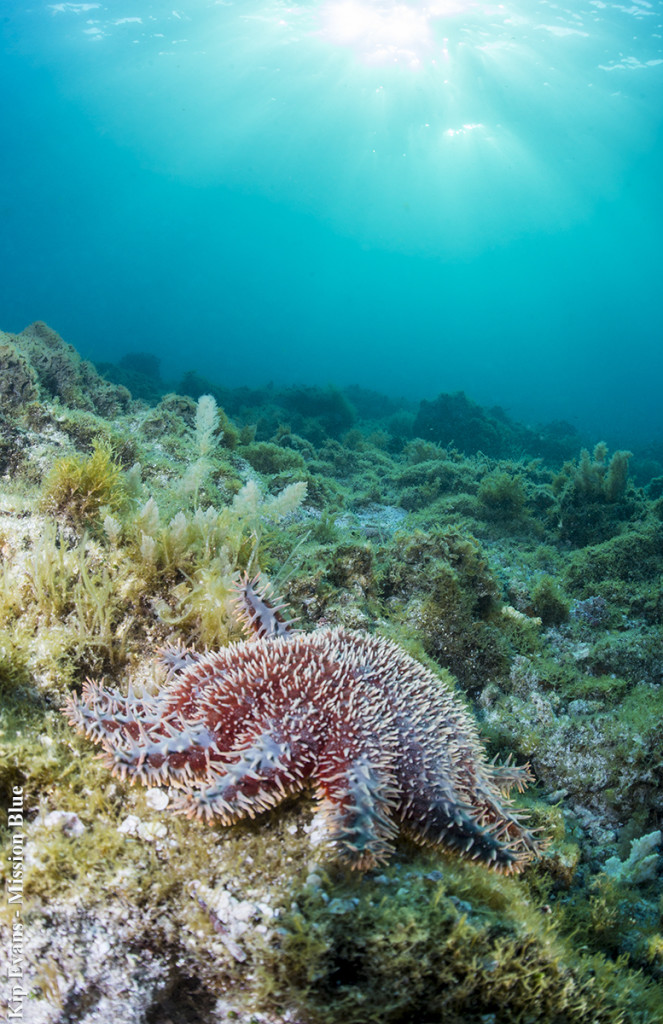
(A Crown of thorns starfish grazes upon a dead reef severely damaged by Hurricane Odile in 2014.)
While many theories abound about the links between climate change, El Niño, hurricanes and the like, some current realities are undebatable:
1) On July 12th, 2015 there were six simultaneous tropical cyclones spinning in the Pacific Basin at once. This huge level of storm activity is extremely rare, if not a first-of-kind event. The Weather Channel reports more on the details here.
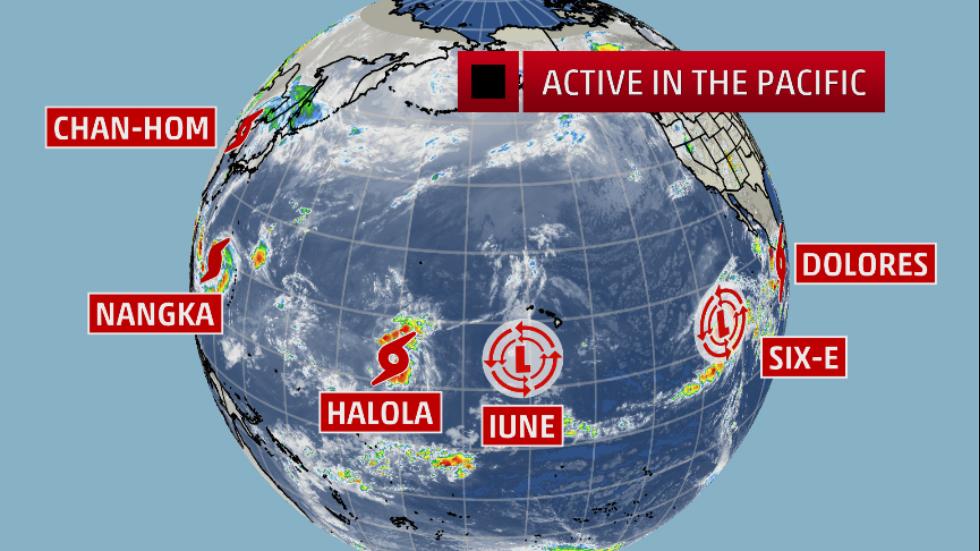
2) Temperatures in the Pacific are way above normal right now, what some are referring to as the Pacific Blob, which began in 2013 and has intensified since then. According to the marine scientists we met with in the Gulf of California, the local surface sea temperatures are way above historical average. Many believe this scenario catalyzes the formation of storms and interferes with marine ecosystem balance. See the map below: the darker the red, the further above average the sea surface temperature.
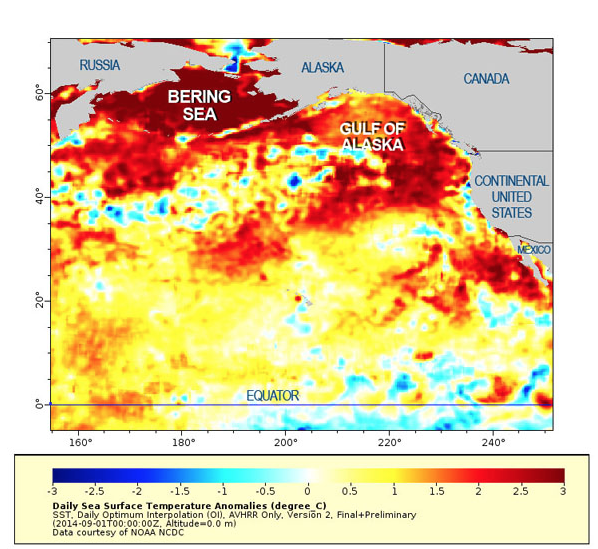
3) This month, three central Pacific storms have formed within 48 hours of each other. That is unheard of in the last half century. Three central Pacific tropical storms formed in July from 1949-2014. That’s three stand-alone central Pacific July storms in the previous 66 years. Now three simultaneous storms in one year, 2015.

4) Right now, a massive category-4 hurricane named Dolores is swirling a few hundred miles south of Cabo San Lucas. It is intensifying. You can learn up-to-date information here.
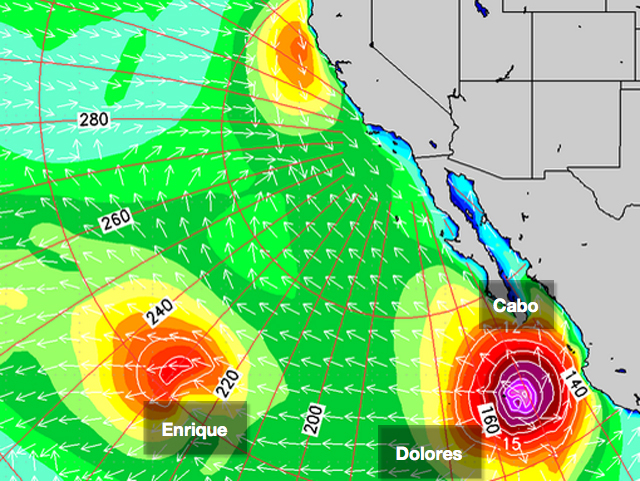
When we think of protecting areas of the ocean like the Gulf of California Hope Spot, often we focus on influencing local policy makers and civil society to make the right decisions for the marine environments. Yet, this recent deluge of storm activity and accompanying tolls on local marine and terrestrial life (humans included), suggests that warming atmosphere and sea temperatures concerns are part of a comprehensive approach to restoring the health of the ocean. Indeed, ocean and climate are integrated and interdependent. Let’s hope the policy makers at the upcoming COP21 International Climate Conference in Paris don’t overlook this reality.
This expedition was made possible with generous support from the Paul M. Angell Family Foundation and the Mexican Fund for the Conservation of Nature, A.C. (FMCN).
Read more about our 2015 Gulf of California Hope Spot expedition:







